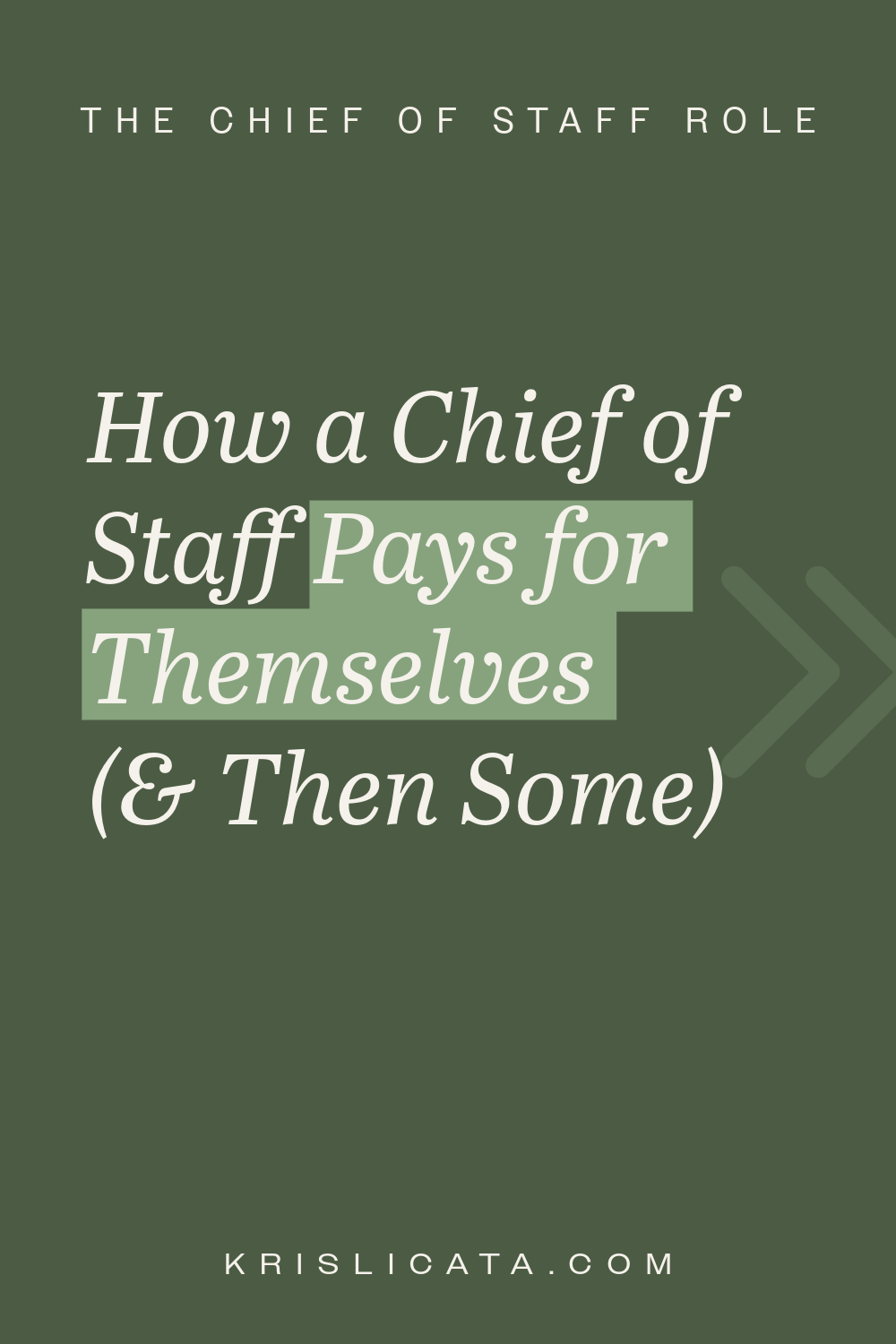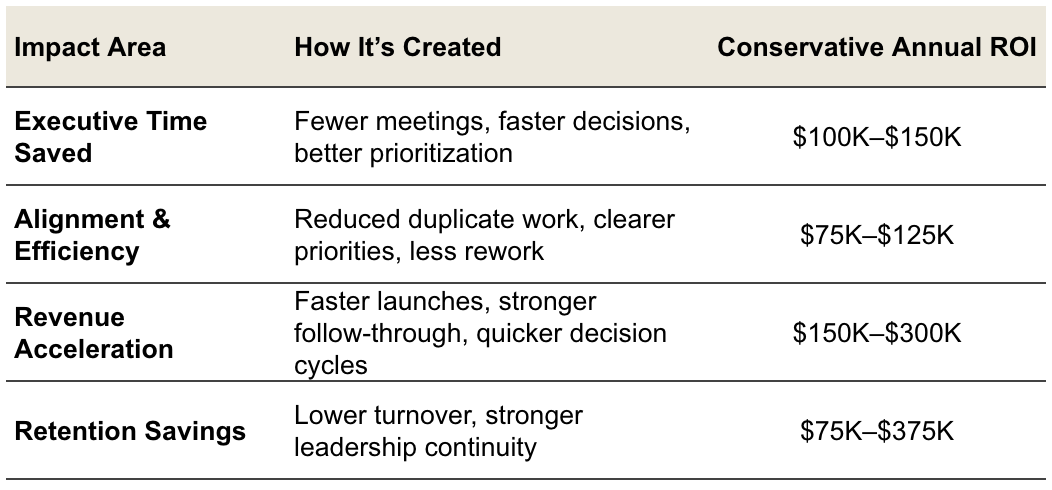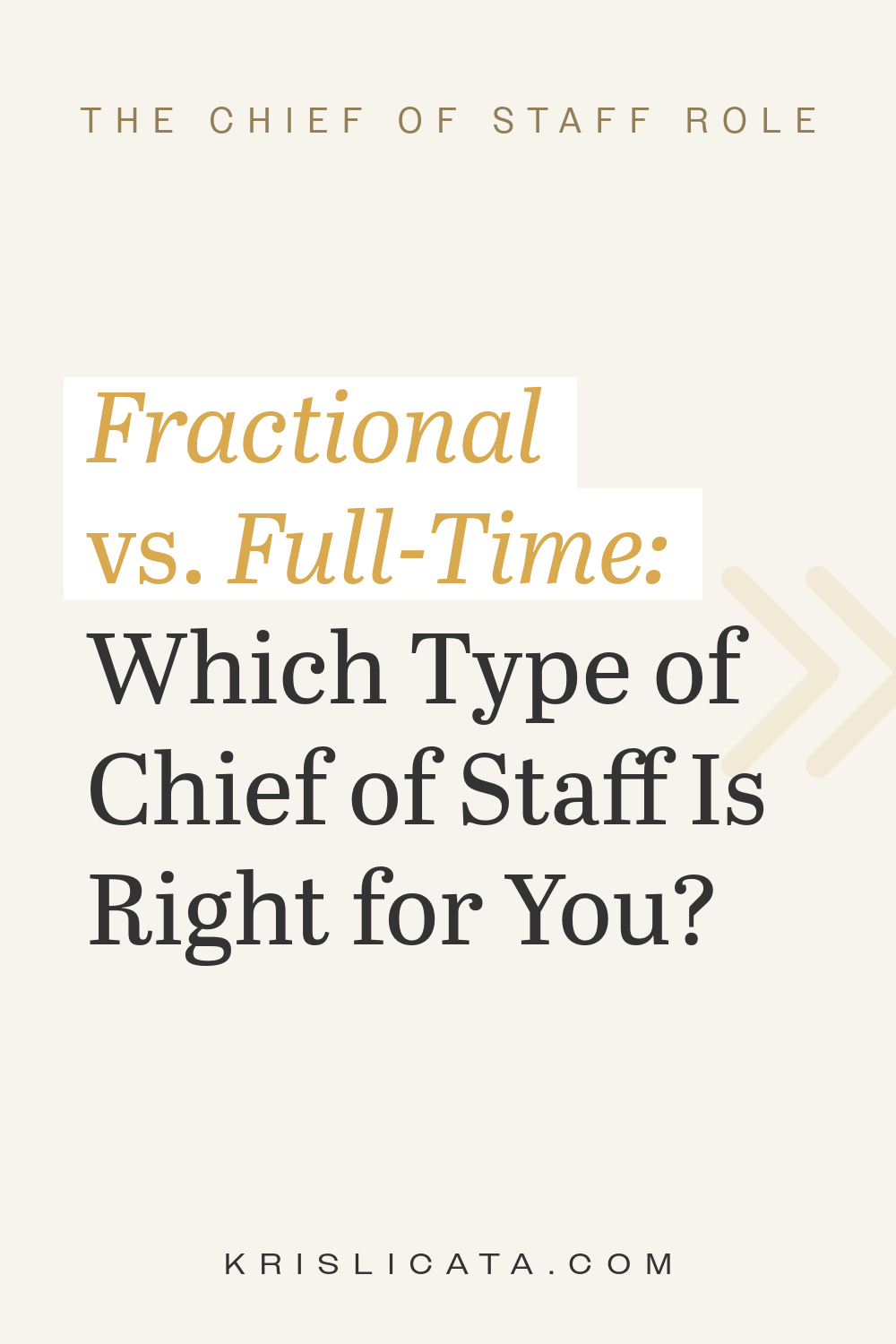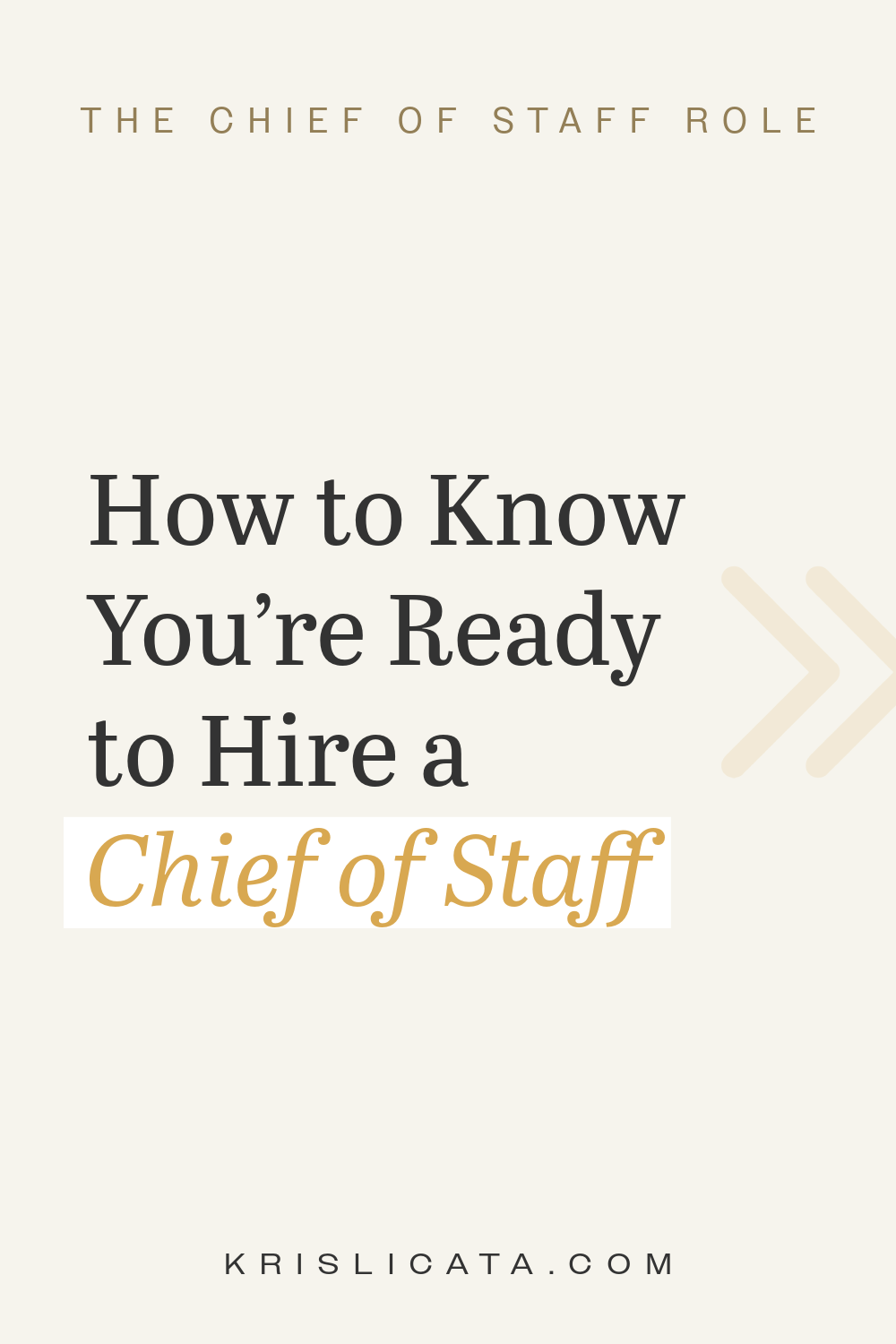How a Chief of Staff Pays for Themselves (and Then Some)
Most leaders hesitate to hire a Chief of Staff because it feels expensive (and I totally get it). Yes, it’s an investment. I’ve heard every version of “it’s a luxury hire” or “I’ll hire one once I’ve made it.”
But I’m challenging you (in a super healthy way) to look past that initial gut reaction.
A great Chief of Staff doesn’t add cost. They unlock value that’s trapped in chaos, indecision, and doing it all yourself. They compound money through better decisions, faster execution, and fewer fires to put out.
5 Ways a Chief of Staff is Worth the Investment
1. Time Saved = Money Reclaimed
Let’s start with math that even your CFO will love. Say your hourly value is $250/hour (roughly $500K/year). Your Chief of Staff helps you:
Trim 5 hours of meetings per week (through prioritization + delegation)
Eliminate 3 hours of being stuck on making hard decisions
Prevent 2 hours of random fire-drills (because there’s finally a system)
That’s 10 hours/week… or 520 hours/year… returned to your highest-value work.
👉 520 hrs x $250 = $130,000/year
You’ve already covered the cost of a mid-level CoS without counting a single operational improvement. And that’s before the ripple effects of your team operating at a higher level, too.
2. Alignment Reduces Waste (the Hidden Expense)
A quiet leak in most companies = Misalignment.
Teams redo work, continue to work on old priorities, or build things that don’t actually help achieve goals. Research shows the average organization wastes 20–30% of operating budget on inefficiency. So if your company spends $5M a year to run, that’s $1M+ in pure “we didn’t communicate effectively” tax. Also known as preventable waste. Eek!
A Chief of Staff doesn’t magically erase that, but even clawing back 10% of that waste = $100K in value.
3. Better Decisions = Faster Revenue
The cost of indecision is brutal. Like the kind that puts your stomach in knots. Every delayed “yes” or “no” is a revenue opportunity sitting in limbo.
A Chief of Staff accelerates this by:
Prepping data + context so you can decide fast
Coordinating next steps before meetings end
Closing feedback loops quickly
If your company brings in $10M/year, improving speed of execution by even 2% adds $200K in revenue. And that’s conservative.
4. Turnover Prevention = Massive ROI
Burnout, miscommunication, and lack of clarity are three of the top reasons talented people leave. Hands down.
Replacing a key leader can cost 50–250% of their salary. A Chief of Staff builds the systems, communication cadence, and culture glue that keep your best people around longer.
Added bonus: Experienced Chiefs of Staff (especially those who’ve led at the executive level) bring a kind of steady leadership presence that lifts the whole room.
→ They model clarity.
→ They normalize feedback.
→ They make cross-functional work less painful.
When that happens, teams wants to stick around. PLUS they grow. Morale improves. And culture stops being a “nice-to-have” and starts becoming a strategic advantage.
So retaining just one key hire worth $150K/year = $75K–$375K saved. Multiply that by a few well-supported leaders, and you start to see how leadership stability compounds.
5. Mental Bandwidth = Strategic Gain
Let’s not ignore the invisible ROI: Your energy. Your focus. Your ability to lead instead of react.
When your brain isn’t cluttered by the 47 half-finished conversations in email, you make cleaner, faster decisions that ripple through your team. That kind of clarity compounds.
→ Projects finish on time.
→ Meetings get more focused (and shorter!).
→ People actually know what the real priorities are.
When you’re grounded and decisive, your team’s nervous system syncs up with yours. That’s not woo-woo. That’s organizational psychology in action.
You spend less time managing and more time building what’s next.
The Real ROI Equation
A Chief of Staff’s ROI isn’t a single number. It’s the sum of reclaimed time, avoided waste, faster growth, and retained talent. If we mapped it out simply:
So we’re talking a potential total = $400K–$950K in annual impact for a role that might cost $150K–$250K.
Not bad math, right?
A Chief of Staff pays for themselves by:
Turning chaos into clarity
Turning ideas into outcomes
Turning your leadership from reactive to intentional
Time to do some math…
Considering hiring a Chief of Staff?
Whenever You’re Ready, Here Are 3 Ways We Can Work Together:
Follow Me on LinkedIn. For insights on leadership, clarity, and getting the most out of the Chief of Staff role. Follow along for quick hits and real talk about making work work.
Hire Me as Your Chief of Staff. Not sure if you need a Chief of Staff? Let’s talk it through. Book a quick discovery call to find the right fit for where you’re headed.
Collaborate With Me. Work with ambitious leaders, too? Let’s dream up a win-win: podcasts, panels, trainings, or creative partnerships that help more people lead well and live well.















